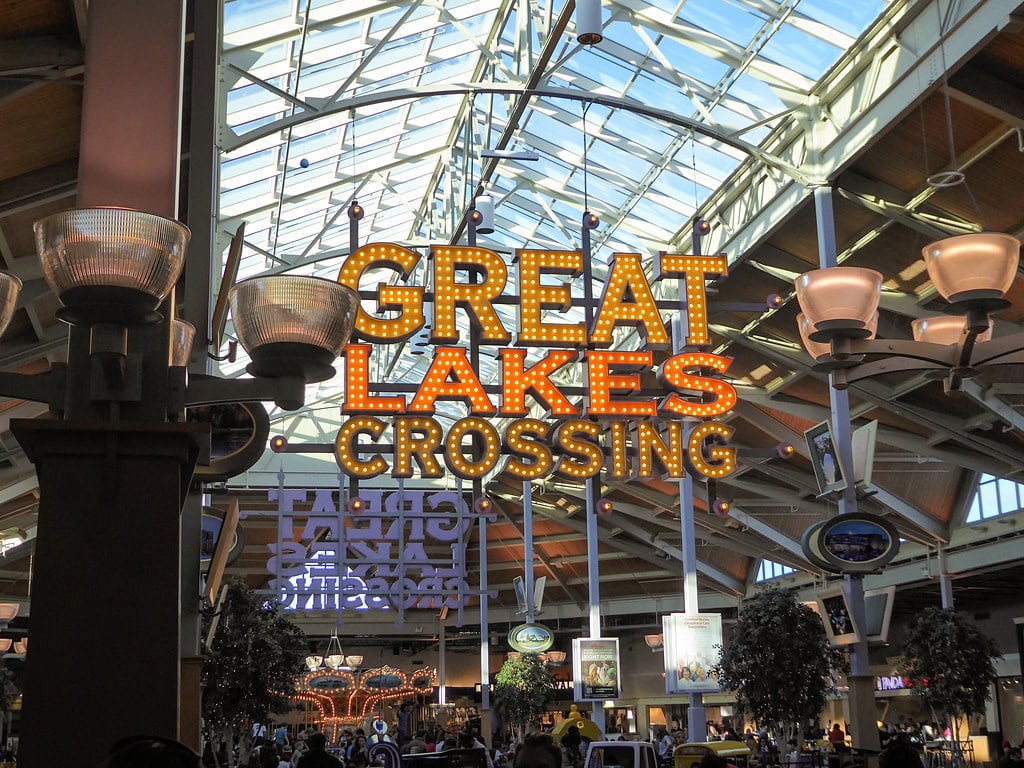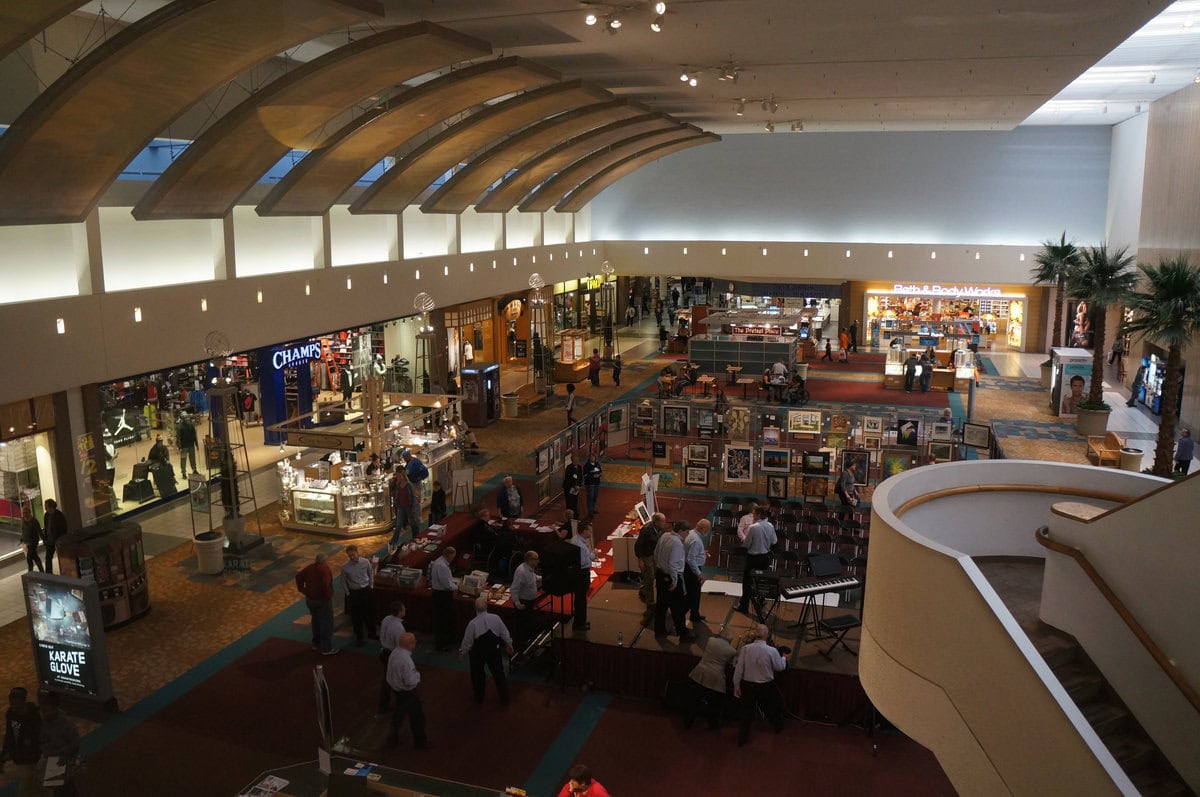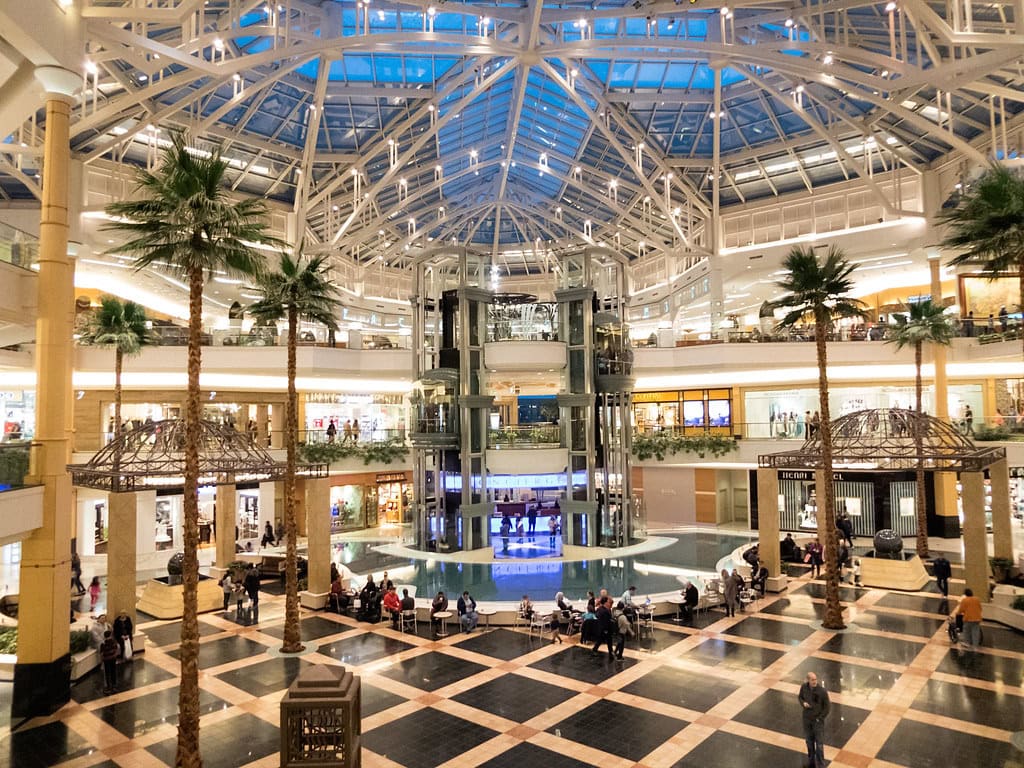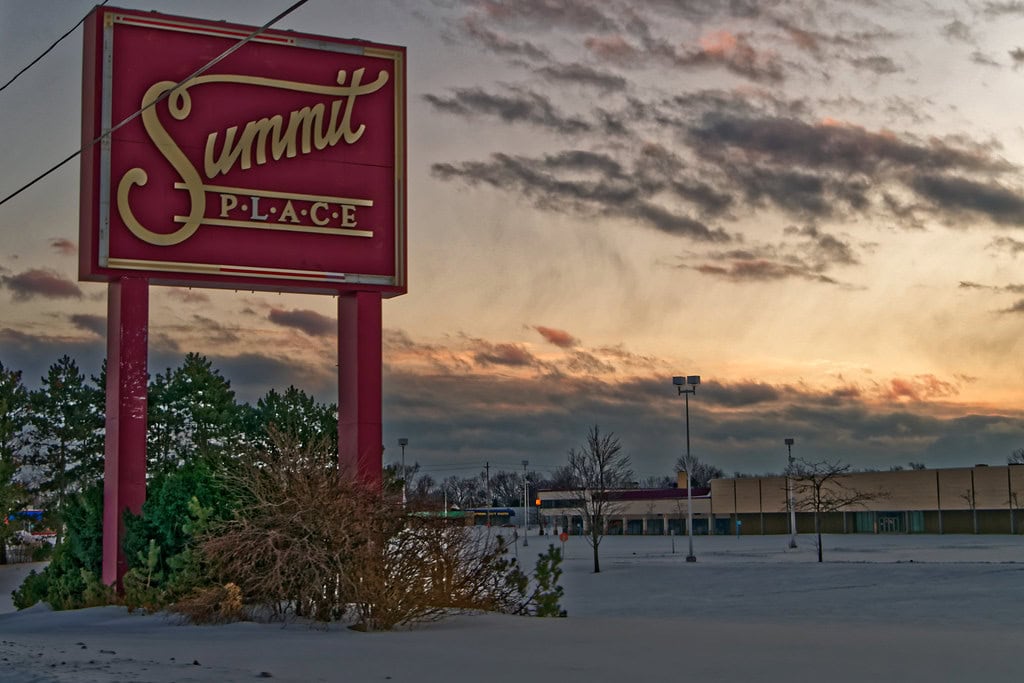A Mall Built for the Moment
Southland Center didn't arrive quietly. When it opened on July 20, 1970, it was the latest entry in a carefully plotted series of Detroit-area shopping hubs, each one with a directional name and a defined purpose.
Northland, Eastland, and Westland had come first. Southland Center brought the concept to Taylor, planted between Telegraph Rd and I-75, just where traffic and suburbia met.
Inside, Hudson's stretched across three levels. A Kroger and a Woolworth's helped round out the everyday appeal. A two-screen theater sat tucked into one corner.
It wasn't flashy by today's standards, but for shoppers looking for things to do south of Detroit, in 1970, the place offered more than clothes and groceries. It offered novelty wrapped in climate control, set in glass and concrete.
Breaking Ground, Securing Foot Traffic
The idea for the Southland Center started to take shape in 1962. Hudson's, a Detroit-based department store chain, had already pioneered the regional mall model in the city's northern suburbs.
For the Taylor site, they worked with Dayton's from Minneapolis to create a new development arm. By the late 1960s, the two merged into the Dayton-Hudson Corporation.
Construction began in August 1968. The design came from Victor Gruen Associates with help from Louis G. Redstone Associates.
Gruen had already become synonymous with postwar suburban shopping concepts. His involvement signaled the mall wasn't going to be an afterthought.
Southland Center opened with a 272,000-square-foot Hudson's at its core, a Kroger grocery store on one side, and a Woolworth's dime store near the center court.
Early tenants also included L.G. Haig shoes, Lane Bryant, and local chains like Winkelman's and Hughes-Hatcher-Suffrin.
Although most of the mall opened in July 1970, the two-screen movie theater didn't start showing films until October 8 of that year.
That detail - a gap of nearly three months - said more about coordination than demand. The stage had been set. Southland Center was ready to absorb the wave of suburban shoppers already circling.
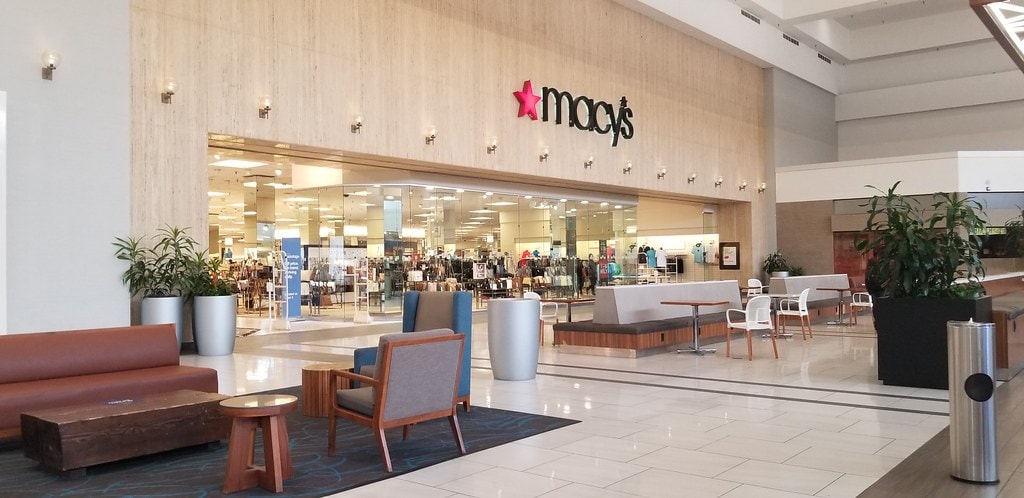
Retail Additions and Bus Lines
By the early 1970s, Southland Center had built its shell. The next step was making it more accessible and more layered.
On June 25, 1973, the Southeastern Michigan Transportation Authority added bus service to the property. Routes expanded from River Rouge, Ecorse, and Wyandotte, with new links from Melvindale, Allen Park, and Lincoln Park.
The timing wasn't accidental. With suburban shopping trips multiplying, transit lines followed the flow of cash and errands.
Changes inside the mall came quickly, too. Kroger closed its store in December 1975 and reopened across Eureka Road. Instead of letting that space go cold, the mall gutted it and carved out room for multiple retailers.
A new wing took shape. General Nutrition Centers and B. Dalton moved in, and on October 6, 1976, a two-level, 215,000-square-foot JCPenney opened at the far end.
Southland Center wasn't trying to turn into something new. It was reacting to the way shoppers were moving - longer visits, wider variety, more than just a department store run.
That layout, anchored by Hudson's and now JCPenney, with smaller specialty shops stretched between, echoed a pattern already working elsewhere.
The theater kept running in the background, still at two screens, still showing whatever drew a weekend crowd.
Format Rebuilds and Ownership Swaps
On December 16, 1983, Southland's theater added two more screens. No overhaul, no fanfare, just an update.
The four-screen setup stayed under Suburban Detroit Theatres until 1986, when AMC Theatres took over. Malls had started to lean harder on entertainment value by then.
Southland's strategy was still measured - expand when needed, hold steady otherwise.
In 1988, a new player entered. The Rouse Company purchased the mall in October of that year after adding a 75,000-square-foot Mervyn's to the western edge.
The store opened on August 12. Rouse didn't reinvent anything overnight, but the acquisition suggested long-term planning. They had the portfolio to manage anchor shifts, which would eventually prove useful.
Retail updates in the early 1990s focused on foot traffic and food. A food court named Picnic In The Garden was announced in 1991, broke ground on February 13, 1992, and opened on November 19.
It came with a large triangular skylight and updated frontage for Champs Sports and Lerner New York. Woolworth's closed in December 1992. Its space turned into Tilt Arcade, which hung on for a while before being carved up again in the early 2000s.

Retail Repositioning and Corporate Reshuffles
In August 2000, the former theater space reappeared as a 22,500-square-foot Borders Books & Music. It opened on August 25, filling the void left by AMC's exit the year before.
This wasn't nostalgia or retrofitting. It was about finding a replacement tenant fast, one that could pull steady weekday traffic and serve the browsing shopper.
The anchor lineup also changed its labels. Hudson's became Marshall Field's in 2001. That didn't last long. By 2006, it had switched again, this time to Macy's.
Just months later, Mervyn's packed up and left Michigan. Then, the mall razed the old food court and constructed a new Best Buy in its place.
Ownership changed, too. The Rouse Company, which had guided Southland Center through the 1990s, was absorbed by General Growth Properties in 2004.
The deal folded Southland Center into a portfolio of larger national properties. By 2011, Borders collapsed under the weight of digital retail. Its store at Southland shut down along with the rest of the chain.
These transitions didn't reflect a master plan. They were more like a pattern of reconfigurations, dictated by which national tenants were still growing and which ones had started to back away from enclosed formats.
Reinvestment Push and Tenant Strategy
In January 2012, Rouse Properties spun off from General Growth and took Southland Center with it. The approach shifted. Instead of chasing big national newcomers, the strategy leaned into filling storefronts quickly and tightening up appearances.
New tenants arrived in the following months, including rue21, Torrid, and Taco Bell. Existing stores remodeled. The upgrades weren't flashy, but they were visible.
In the spring of 2013, Forever 21 moved into the former Borders unit. Their new store replaced a smaller location and helped anchor that part of the mall after the bookstore exit.
Later that same year, a row of smaller shops near JCPenney was removed.
The new space became an 11,300-square-foot Shoe Carnival. That store had previously been located across Eureka Road in a strip development.
In July 2014, Rouse announced a redevelopment of the former Mervyn's footprint, the plan called for a 12-screen, all-digital Cinemark multiplex.
Alongside the theater, the project brought in several sit-down restaurants with outside entrances. These weren't mall food court outlets. They were built to attract people looking for dinner and a movie, even if they never stepped past the fountain.
Work started in late summer. Construction dust mixed with crowds during the holidays. The results were visible by the summer of 2015.
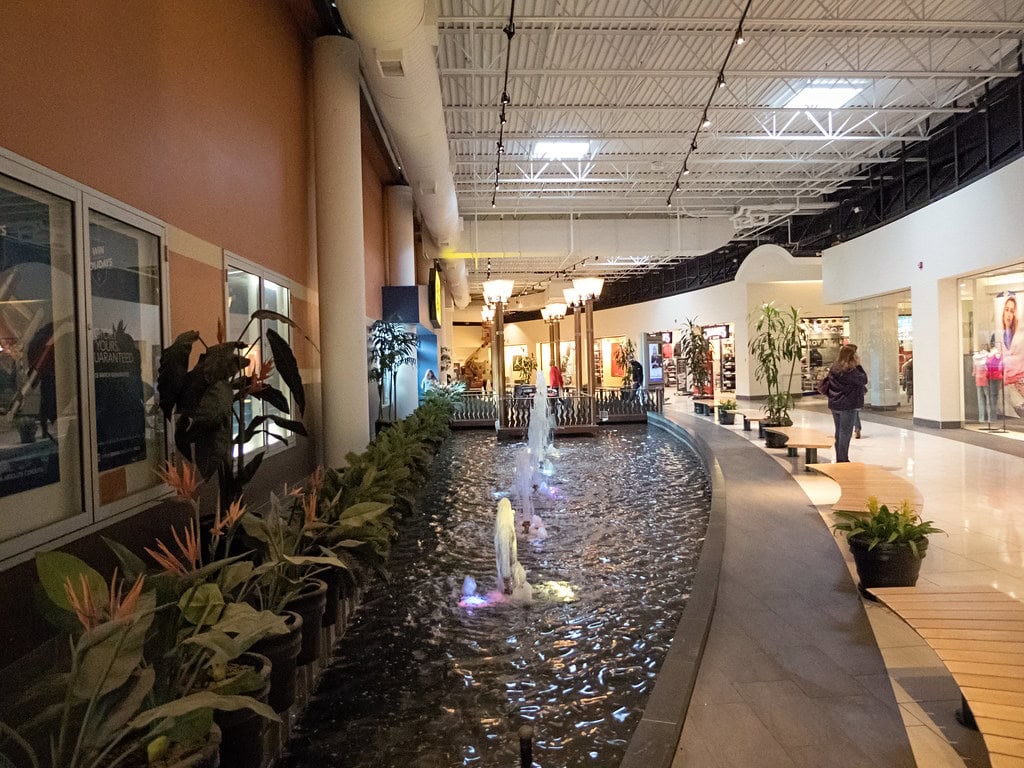
Anchor Rebrands and Format Pressure
By 2018, Southland's main tenants had started shifting in place. Macy's carved out part of its third floor for a Macy's Backstage concept.
That hybrid model had already shown up in other markets and aimed to draw outlet shoppers without leaving the department store footprint.
The label on the building stayed the same, but the retail logic underneath it kept changing.
Elsewhere in the mall, the ripple effects of national brand decline were starting to register. No stores closed en masse, but there was churn.
Shoppers who remembered the original configuration had trouble finding familiar markers. Tenants came and went faster, often without notice or renovation.
More chain stores leaned into shorter leases. Others pushed for updated square footage or visibility toward exterior access.
Southland Center was still operated under Brookfield Properties during this period. Brookfield had acquired the property through its 2018 merger with GGP and kept it in rotation. They didn't launch a new concept or large-scale redesign.
The mall held its shape while key pieces kept shuffling. Then came 2024, and the first public signs that the property might be for sale.
Transaction Close and Portfolio Hand-off
On January 25, 2025, the sale closed. Greenwood Global, a private investment group based in Illinois, purchased Southland Center.
Jones Lang LaSalle took over management. City officials didn't stage a ceremony or release a long statement, but the transaction got attention.
It wasn't a redevelopment deal. It was a trade.
The sale followed a quiet stretch of speculation that began in late 2024 after Brookfield's loan default triggered a restructuring review.
The mall had still brought in more than $8 million in revenue across the first half of 2024. But the debt structure had been built for stronger numbers.
Less than two months after the deal closed, Forever 21 pulled out. That closure came in March 2025, part of a broader exit from Michigan.
The store that had replaced Borders just twelve years earlier now sat dark. It wasn't clear whether Greenwood would backfill it or leave the space idle.
The anchors stayed open. Cinemark, Best Buy, JCPenney, and Macy's kept their hours. The mall didn't rebrand. The hand-off happened with minimal fuss. Ownership changed. The square footage stayed put.

🍀


